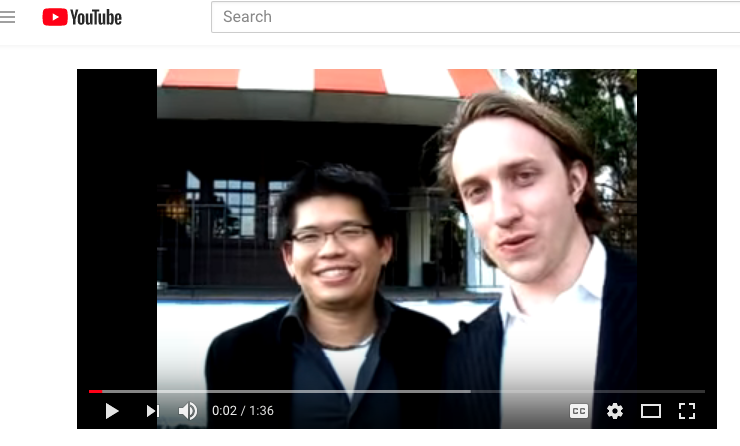
Articles
Editor’s Picks
YouTube at 13: Platform Transformed Entertainment and Education
By Cait Etherington
April 23, 2018
Thirteen years ago today on April 23, 2005, YouTube’s first video, an 18-second clip known as “Me at the Zoo,” was uploaded. Since then, the platform has transformed how moving images circulate on a mass scale. Indeed, for many people, imagining life without YouTube is as difficult as imagining life without television.
Over the past thirteen years, YouTube, more than any other video-sharing platform to appear since the early 2000s, has become the go-to place to upload video clips of all kinds from pirated television episodes to out-of-copyright instructional films from the 1950s to painfully embarrassing video recordings of school concerts. What the platform’s creators, Chad Hurley and Steven Chen, likely didn’t anticipate back in 2005 is that YouTube would ultimately have as profound an impact on education as entertainment.
What YouTube Changed
Prior to YouTube, uploading a video to the web was no easy task. To illustrate, one only need consider the history of a video widely known as the Star Wars Kid. The video was shot back in November 2002 by a Quebec high school student named Gyslain Raza. Raza had no intention of sharing his goofy video with the entire world nor even everyone in his school, but when he accidentally left his cassette on a table, his life and the history of the Internet changed. By chance, the cassette was found by two classmates who decided it would be a fun prank to share the video more widely. In a pre-YouTube era, however, this wasn’t easy: It took the pranksters over four months to transfer the file to a new format and find a way to successfully upload the short clip to the web where it could be easily shared with viewers around the world. Had the Star Wars Kid video been discovered only two years later in the age of YouTube, the four months between the cassette’s misplacement and the video’s appearance online would likely have been reduced to a day or even a mere few hours.
Setting the misfortune’s of the “Star Wars Kid” aside (notably, the video’s creator suffered severe bullying as a result the video’s upload, which is often cited as the world’s first Internet meme to go viral), the incident clearly illustrates what YouTube offered in the early years of the Web: A free, easy, and fast way to share videos with people locally and globally. In October 2005, the New York Times observed, “Sharing video on the Web is still a new notion,” but only two and a half years later, it was clear that YouTube was no longer just another quirky file-sharing site on the Internet. By then, the platform had been sold to Google and everyone from proud moms to DIY crafters to Queen Elizabeth had uploaded videos to the site, but the site’s growth didn’t stop there. Since its inception, YouTube has attracted over one billion users and now reaches more 18-34 and 18-49 year-olds than any cable network in the United States. It has also launched local versions in more than 88 countries and can be navigated in 76 different languages that cover 95% of the Internet population.
Impact on Education
Tracing YouTube’s impact on education is somewhat challenging since it has ultimately covered such a wide swath of educational endeavors. Early on in its life cycle, out-of-copyright instructional films, including 1950s’ sex education videos, started to appear on the platform, as well as do-it-yourself videos on everything from how to play the electric guitar to how to grow cucumbers to how to speak Mandarin. As early as 2007, academics were also already beginning to publish articles on the potential use of the platform as an educational tool. At the same time, however, many U.S. school districts were blocking YouTube from classrooms, largely due to the fear that the site would let in videos inappropriate for children and due to a misperception that YouTube was largely responsible for something that had, by that time, come be known as “cyberbullying.”
In the second part of this two-part series, eLearning Inside News further explores how YouTube realized something that educators in the mid-twentieth century imagined but never fully developed: An educational platform truly geared to the television generation.









One Comment